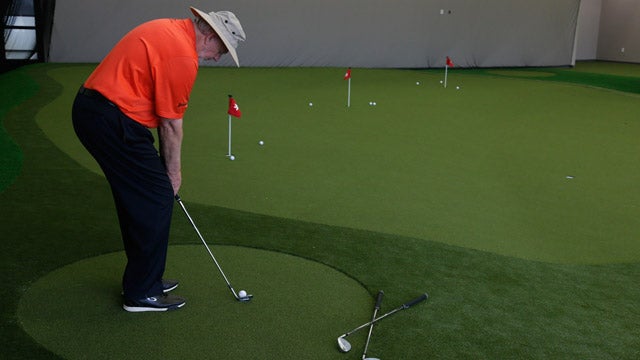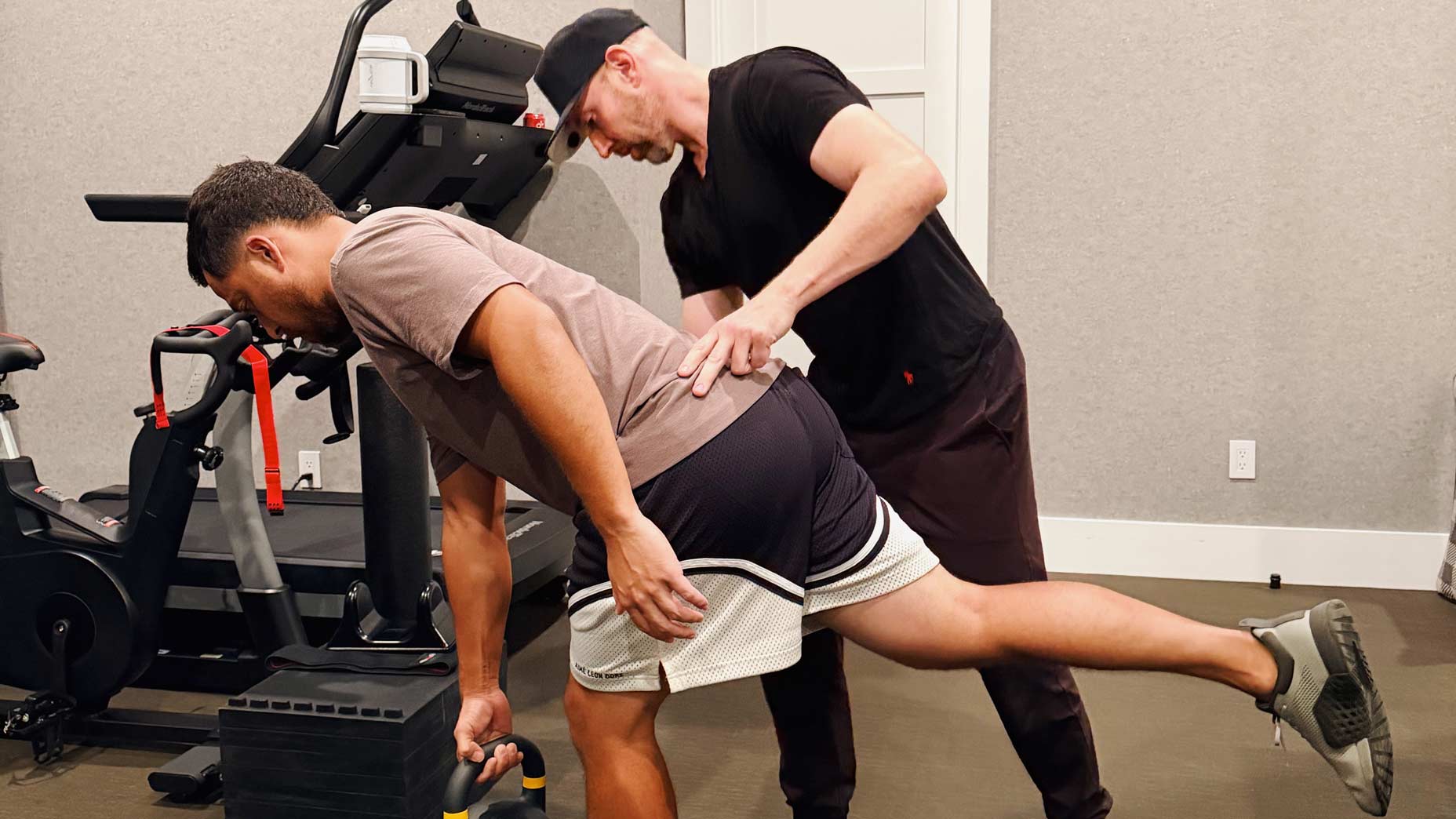When I practice low-running chips, a swing aid helps me minimize unwanted wrist hinge.
One of the great quandaries in golf is what shot to play with which club when you’re just a few yards short of the green and can use almost any club. The possibilities seem infinite—and that’s the problem.
Most weekend players don’t practice a wide variety of short chips. Nor do they tend to have a favorite club or swing to lean on. Worse, even though short-chip swing mechanics are technically simple, most mid- to high-handicappers are unfamiliar with how much backspin that different types of chips generate. Therefore, they don’t know how fast these shots will travel, or where they’ll stop.
But it’s easier than you think to get up and down from just off the green. The key? Simplify your options. Follow these two chipping rules and you can save several strokes every time you tee it up.
1. Minimize backspin.
2. Control shot distance with the length of your back- and through-swings, not by swinging harder.
To pull off low-flying and low-spinning chip shots that roll out nicely, choose the lowest-lofted club that will fly the ball about three feet onto the green. Play the ball far enough back in your stance that your hands stay ahead of the shaft and clubhead through impact. And use a swing that’s more like a putting stroke—it should have little or no wrist hinge. From there, it’s a matter of using the length of your swing, not the velocity, to control shot distance: short swings for short chip shots, long swings for long chips.

The technique is extremely simple—it takes very little practice to lock in the swing length that will produce a given rollout. In the photo above, I’m working on my low-running chips from a tight-lie area at the indoor facility at Blessings Golf Club. Notice that I’ve positioned the flags to practice three different-length chips from the same spot. The only thing I change between shots is the length of my swing and my club selection: lob wedge (for the short pin), 9-iron (middle pin) and 8-iron (farthest pin).
Try this when you practice. A handy-dandy swing aid called the ChipStick can help you feel the difference between a solid finish (bottom photo, top) and a finish with too much wrist hinge (bottom photo, bottom).
Chipping with a range of lofted clubs (lob wedge to 6-iron) gives you a lot of choices around the green while producing a simple, repeatable low-spin rollout for your entire chipping game.
Once you learn your no-wrist-hinge swing length for the desired distance, your up-and-down game will absolutely blossom, and you’ll see your handicap shrink in a hurry.








